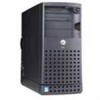Dell PowerEdge SC1420 Information Update - Page 12
SATA Operation, RAID On, SMART Reporting, Integrated NIC, No Boot, LPT Port Mode, LPT Port DMA - specifications
 |
View all Dell PowerEdge SC1420 manuals
Add to My Manuals
Save this manual to your list of manuals |
Page 12 highlights
www.dell.com | support.dell.com Table 1-3. Drive Options (continued) Option SATA Operation (RAID On default) SMART Reporting (Off default) Description Determines the integrated SATA controller's operating mode. RAID On enables RAID support. RAID Off disables RAID support. NOTICE: When using a SCSI RAID add-in controller card, set the integrated SATA controller's operating mode to RAID Off. Determines whether hard-drive errors for internal drives are reported during system startup. Off does not report errors. On reports errors. Table 1-4. Onboard Devices Options Option Integrated NIC (On default) USB (On default) LPT Port Mode (PS/2 default) LPT Port Address (378 default) Serial Port (#1 or #2) (Auto default) PS/2 Mouse Port (On default) Description Enables or disables the integrated NIC controller. Off disables the controller. On enables the controller. NOTE: PXE or RPL is required only if you are booting to an operating system on another system; not if you are booting to an operating system on a hard drive in this system. Enables or disables the internal USB controller. Off disables the controller. On enables the controller. No Boot enables the controller but disables the ability to boot from a USB device. Determines the mode of operation of the internal parallel port. Off disables the port. AT configures the port for IBM AT compatibility. PS/2 configures the port for IBM PS/2 compatibility. EPP configures the port for the EPP bidirectional protocol. ECP configures the port for the ECP bidirectional protocol. If you set the LPT Port Mode to ECP, the LPT Port DMA option appears in the option menu. Determines the address that the built-in parallel port uses. Serial Port 1 options are COM1, COM3, Auto, and Off. Serial Port 2 options are COM2, COM4, Auto, and Off. When serial port 1 or 2 is set to Auto, the integrated port automatically maps to the next available port. Serial port 1 attempts to use COM1 first and then COM3. Serial port 2 attempts to use COM2 first and then COM4. If both addresses are in use for a specific port, the port is disabled. If you set the serial port to Auto and add an expansion card with a port configured to the same designation, the system automatically remaps the integrated port to the next available port designation that shares the same IRQ setting. Enables or disables the integrated PS/2-compatible mouse controller. Off disables the controller. On enables the controller. 10 Information Update















